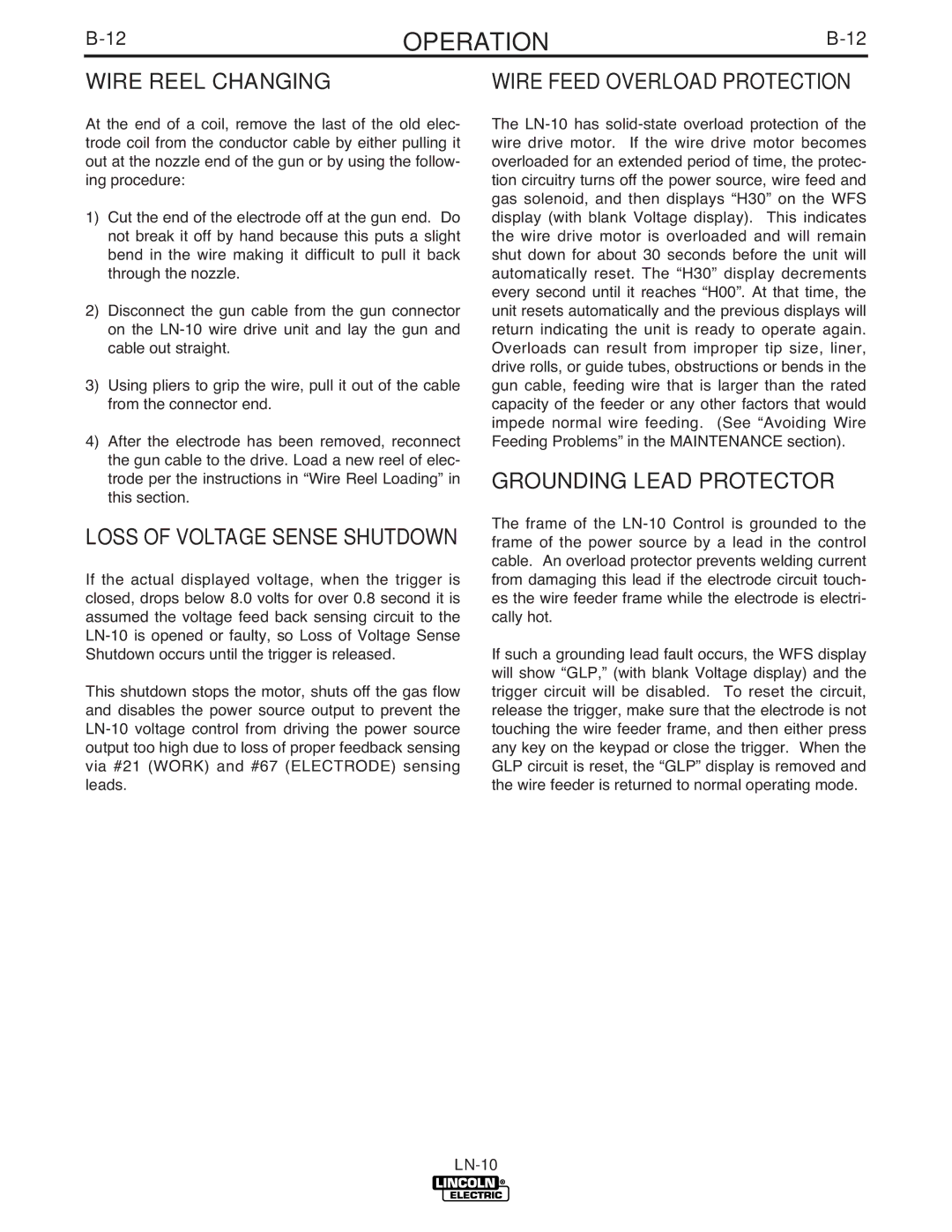OPERATION | ||
|
|
|
WIRE REEL CHANGING
At the end of a coil, remove the last of the old elec- trode coil from the conductor cable by either pulling it out at the nozzle end of the gun or by using the follow- ing procedure:
1)Cut the end of the electrode off at the gun end. Do not break it off by hand because this puts a slight bend in the wire making it difficult to pull it back through the nozzle.
2)Disconnect the gun cable from the gun connector on the
3)Using pliers to grip the wire, pull it out of the cable from the connector end.
4)After the electrode has been removed, reconnect the gun cable to the drive. Load a new reel of elec- trode per the instructions in “Wire Reel Loading” in this section.
LOSS OF VOLTAGE SENSE SHUTDOWN
If the actual displayed voltage, when the trigger is closed, drops below 8.0 volts for over 0.8 second it is assumed the voltage feed back sensing circuit to the
This shutdown stops the motor, shuts off the gas flow and disables the power source output to prevent the
WIRE FEED OVERLOAD PROTECTION
The
GROUNDING LEAD PROTECTOR
The frame of the
If such a grounding lead fault occurs, the WFS display will show “GLP,” (with blank Voltage display) and the trigger circuit will be disabled. To reset the circuit, release the trigger, make sure that the electrode is not touching the wire feeder frame, and then either press any key on the keypad or close the trigger. When the GLP circuit is reset, the “GLP” display is removed and the wire feeder is returned to normal operating mode.
